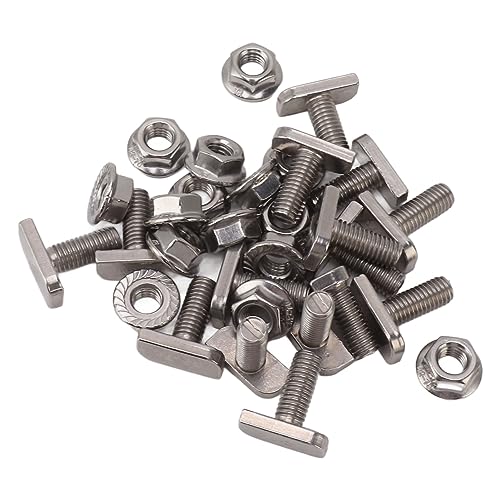You are using an out of date browser. It may not display this or other websites correctly.
You should upgrade or use an alternative browser.
You should upgrade or use an alternative browser.
Calculating Resistors in series and parallel
- Thread starter kiwiNCFC
- Start date

Help Support Talk Electrician Forum:
This site may earn a commission from merchant affiliate
links, including eBay, Amazon, and others.
ianmacd
Well-known member
- Joined
- Mar 15, 2009
- Messages
- 3,877
- Reaction score
- 0
Series is where they are next to each other so the electrons pass though one and then the other. Resistance is R1+R2
Parallel is when they overlap each other so the electrons pass though both at the same time. Resistance is (R1*R2)/(R1+R2)
Ian.
Parallel is when they overlap each other so the electrons pass though both at the same time. Resistance is (R1*R2)/(R1+R2)
Ian.
kiwiNCFC
Senior Member
- Joined
- Apr 19, 2009
- Messages
- 155
- Reaction score
- 0
The following resistances are connected together in parallel. 2ohm, 5ohm, 10ohm and 5ohm. What is the total resistance?
10ohm
1ohm
0.22ohm
22ohms
Ok so im trying do this. Im struggling to do this via R1 X R2 / R1+R2
I got 0.226
10ohm
1ohm
0.22ohm
22ohms
Ok so im trying do this. Im struggling to do this via R1 X R2 / R1+R2
I got 0.226
Theorysparky
Domestic Electrician
- Joined
- Feb 18, 2008
- Messages
- 4,232
- Reaction score
- 0
1/RT = 1/R1 + 1/R2 + 1/R3 + 1/R4
1/RT = 1/2 + 1/5 + 1/10 + 1/5
1/RT = 0.5 + 0.2 + 0.1 + 0.2
1/RT = 1
RT = 1/1 = 1 ohm
1/RT = 1/2 + 1/5 + 1/10 + 1/5
1/RT = 0.5 + 0.2 + 0.1 + 0.2
1/RT = 1
RT = 1/1 = 1 ohm
kiwiNCFC
Senior Member
- Joined
- Apr 19, 2009
- Messages
- 155
- Reaction score
- 0
Got stuck again, This time on an example in a book.
For example....A parallel connection
1/R1 + 1/R2 + 1/R3
1/6ohms + 1/6ohms + 1/6ohms
Then it says Total Resistance = 1+1+1 / 6 ohms = 3/6ohms
Where do they get the 1+1+1 from this is really bugging me! Its on page 106 on basic electrical installation work by trevor linsley
For example....A parallel connection
1/R1 + 1/R2 + 1/R3
1/6ohms + 1/6ohms + 1/6ohms
Then it says Total Resistance = 1+1+1 / 6 ohms = 3/6ohms
Where do they get the 1+1+1 from this is really bugging me! Its on page 106 on basic electrical installation work by trevor linsley

£519.99
Stalwart DA-YSD1AE Commercial Electric Convection Oven 4 Trays 325x450mm
Nextday Catering Equipment Supplies
Theorysparky
Domestic Electrician
- Joined
- Feb 18, 2008
- Messages
- 4,232
- Reaction score
- 0
the common denominator is 6
1 sixth + 1 sixth + 1 sixth is 3 sixths 3/6
as the lower number is the same you can just add the top numbers
http://www.mathleague.com/help/fractions/fractions.htm#addingandsubtractingfractions
1 sixth + 1 sixth + 1 sixth is 3 sixths 3/6
as the lower number is the same you can just add the top numbers
http://www.mathleague.com/help/fractions/fractions.htm#addingandsubtractingfractions
kiwiNCFC
Senior Member
- Joined
- Apr 19, 2009
- Messages
- 155
- Reaction score
- 0
Ok i now get it when the denominator is the same but when it is different i am getting confused.
Another example in my book says the following:
1/2ohms + 1/3ohms + 1/6ohms
3+2+1 / 6 ohms = 6/6ohms
Rp = 6 ohms/6 = 1 ohms
The bit in bold is where i am stuck. I cant for the life of me see where that has come from?!
Another example in my book says the following:
1/2ohms + 1/3ohms + 1/6ohms
3+2+1 / 6 ohms = 6/6ohms
Rp = 6 ohms/6 = 1 ohms
The bit in bold is where i am stuck. I cant for the life of me see where that has come from?!
Right. If the denominators are different:
1/2 +1/3 +1/6 ohm
is the same as:
3/6+2/6+1/6 ohm
i.e. you need to make all the denominators the same, by multiplication. Whatever you have to multiply a particular denominator by you mulyiply its numerator by the same amount....
as above:
1/2 (half) of something, is exactly the same amount as 3/6 (three sixths).
The easiest way to get a common denominator is multiply them all together. It won`t give you the lowest common denominator, but it will work:
if your example was:
1/7 + 1/12 + 1/3 ohms
the 1/3 would go straight into the 1/12 (i.e. 4/12), but the seven wouldn`t.
if you do 7 X 12, you get 84. So:
12/84 + 7/84 + 28/84
would give 12+7+28 / 84
=47/84 (Rt)
=0.559 (Rt)
1/0.559 (1/Rt)
Gives 1.787 ohms.
HTH
KME
1/2 +1/3 +1/6 ohm
is the same as:
3/6+2/6+1/6 ohm
i.e. you need to make all the denominators the same, by multiplication. Whatever you have to multiply a particular denominator by you mulyiply its numerator by the same amount....
as above:
1/2 (half) of something, is exactly the same amount as 3/6 (three sixths).
The easiest way to get a common denominator is multiply them all together. It won`t give you the lowest common denominator, but it will work:
if your example was:
1/7 + 1/12 + 1/3 ohms
the 1/3 would go straight into the 1/12 (i.e. 4/12), but the seven wouldn`t.
if you do 7 X 12, you get 84. So:
12/84 + 7/84 + 28/84
would give 12+7+28 / 84
=47/84 (Rt)
=0.559 (Rt)
1/0.559 (1/Rt)
Gives 1.787 ohms.
HTH
KME
Similar threads
- Replies
- 42
- Views
- 2K





























































